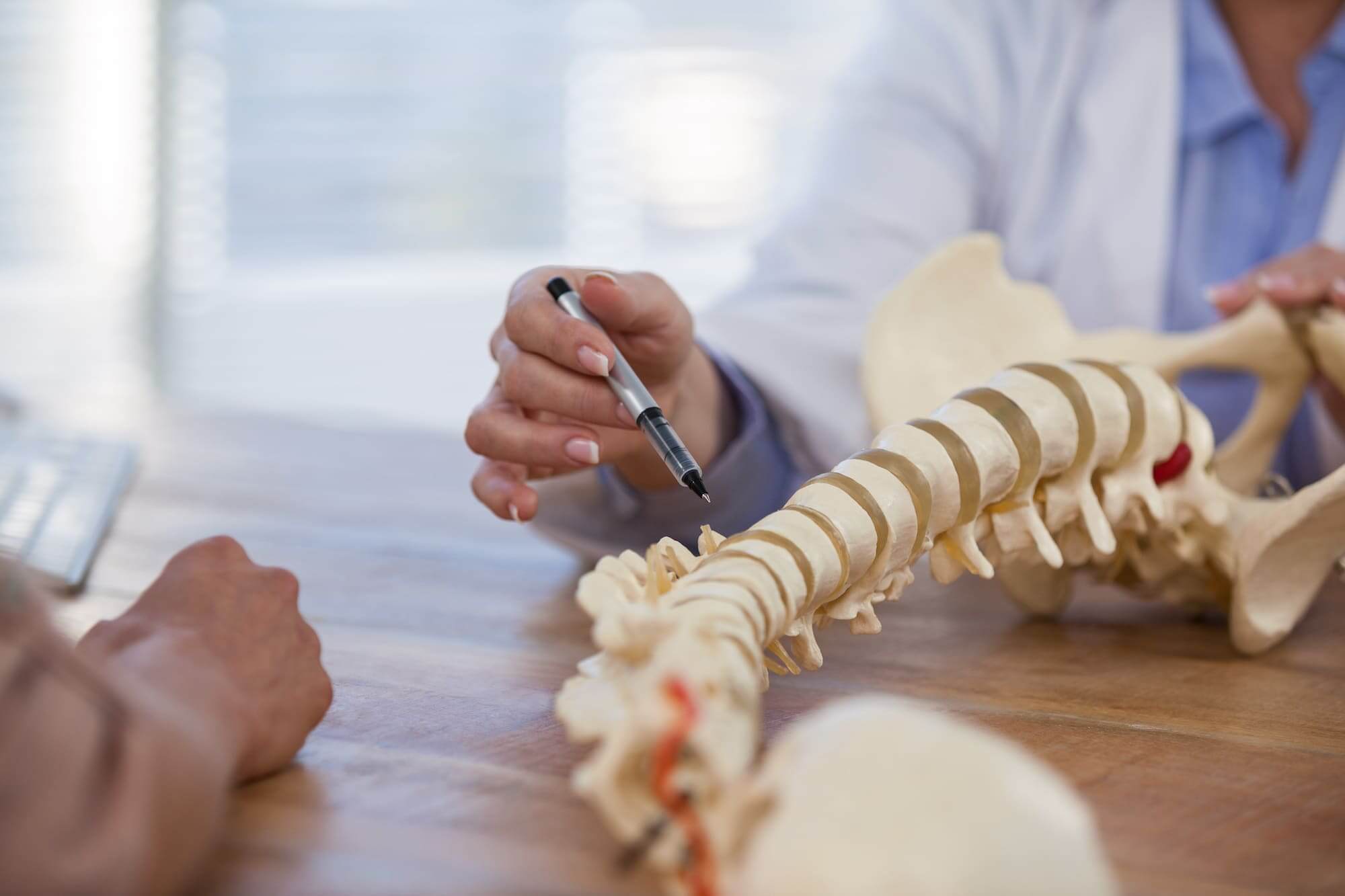Sacroiliac Joint Dysfunction (SI Joint Pain)
Understanding the Symptoms, Causes & Treatments for SI Joint Dysfunction
Reviewed by: Dr. Christopher Good, Dr. Colin Haines, Dr. Ehsan Jazini
What is Sacroiliac (SI) Joint Dysfunction?
The sacroiliac (SI) joint is where the spine meets the pelvis. A joint is where two separate bones connect through soft tissues, including tendons, ligaments, and muscles. The SI joint is designed to handle compressive loads, allowing us to walk, run, jump, bend, and more. When this joint becomes inflamed and causes pain, the condition is known as sacroiliitis. There are various causes of SI joint pain, most commonly trauma, pregnancy, lumbar pathology, or lumbar fusion surgery.The majority of treatment is aimed at managing your symptoms non-surgically through physical therapy, joint mobilization, dry needling, manual massage, steroid injections, and strengthening of surrounding muscles.


What Are Common Symptoms of SI Joint Dysfunction?
Sacroiliac (SI) joint dysfunction or inflammation can cause sacroiliac joint pain that mimics other conditions such as degenerative hip disease, bursitis, disc herniation, or pinched nerves. Symptoms of SI joint dysfunction vary widely depending on the individual and the underlying cause. Common presenting symptoms include low back pain, often found on one side, which worsens with prolonged sitting, standing, or specific movements. Additional symptoms include buttock pain or radiating pain, numbness, or tingling in the hips, groin, or legs. Patients with sacroiliitis often struggle with sleep due to difficulty finding a comfortable position.
When to Seek Care for SI Joint Dysfunction?
Persistent back or neck pain lasting more than 10 days should be evaluated by a spine surgeon. Watch for warning signs such as pain with fever, loss of bladder control, or weakness/tingling in your limbs, as these may indicate a more serious condition. If you’re noticing any symptoms of SI joint pain described, we highly recommend seeking immediate attention with a spine specialist for an accurate diagnosis and timely treatment. Early intervention can enhance your overall well-being and expand treatment options, leading to a more successful recovery.


What Are Common Causes of SI Joint Dysfunction?
There are many causes of SI joint dysfunction related pain. The source of sacroiliac joint dysfunction symptoms often includes nerve irritation, fluid buildup, misalignment of the joint, or micro-tears in the ligaments that provide stability. Most commonly, the SI joint is not the primary source causing pain. Rather, sacroiliac joint pain often stems from underlying issues like facet syndrome, degenerative disc disease, herniated discs, or segmental instability.
Other common causes include trauma, arthritis, pregnancy, and genetic diseases. Trauma, such as a car accident or fall, may cause the joint to move out of normal alignment. When the SI joint is out of alignment, it can lead to issues like bone spurs or a sensation of the joint popping out of place, requiring targeted treatments. The SI joint can also degenerate over time leading to bone spur formation, otherwise known as osteoarthritis. Pregnancy is another cause of SI joint related pain due to laxity of surrounding ligaments from production of the hormone progesterone. Other, less common causes include certain genetic diseases such as Ankylosing spondylitis where the sacroiliac joint auto fuses together.
How is SI Joint Dysfunction Diagnosed?
Diagnosing SI Joint Dysfunction involves a detailed history and physical exam, including palpation, provocative testing, and assessing spinal range of motion. While X-rays or MRIs may reveal osteoarthritis, it is important to note that the presence of arthritis does not necessarily correlate with pain. However, just because arthritis is found on imaging does not mean that you will experience pain in the SI joint.


What Are Common Treatments for SI Joint Pain and Dysfunction?
Initial treatment options for sacroiliac (SI) joint dysfunction related pain include spine-specialized physical therapy, anti-inflammatory medications, and steroid injections. Physical therapy with a specialist in spine health is imperative to optimize symptomatic relief. A physical therapist will guide you on proper body mechanics, including SI joint strengthening exercises, general muscle strengthening, and effective stretching techniques. Additionally, they may also perform joint mobilization, manual massage, and dry needling to help mobilize the soft tissues and relax tight muscles. Steroid injections can also be used as a targeted therapy to decrease inflammation and further optimize physical therapy. If steroid injections only temporarily relieve your pain, radiofrequency ablation of the SI joint can also be utilized.
If you have failed non-surgical treatments as listed above and develop intractable pain, there are surgical options to provide permanent stability and pain relief. At VSI, our spine surgeons continue to perform innovative, evidence-based spine surgery. In June 2013, Dr. Christopher Good was the first surgeon in North America to perform robotic guided sacroiliac fusion. We continue to evolve as technology develops to optimize your overall treatment outcome.
Frequently Asked Questions about Sacroiliac Joint Dysfunction
Need Clarity on SI Joint Pain Symptoms and Treatment?
Book an appointment with VSI for a clearer understanding of your condition. We recommend in-person visits for an accurate diagnosis and guidance with our spine doctors.

